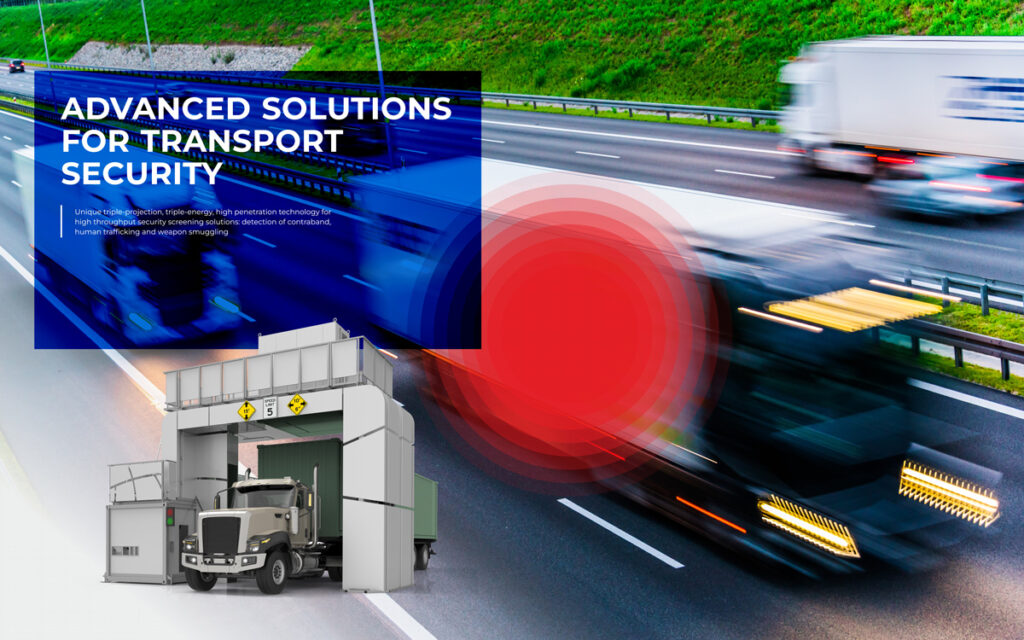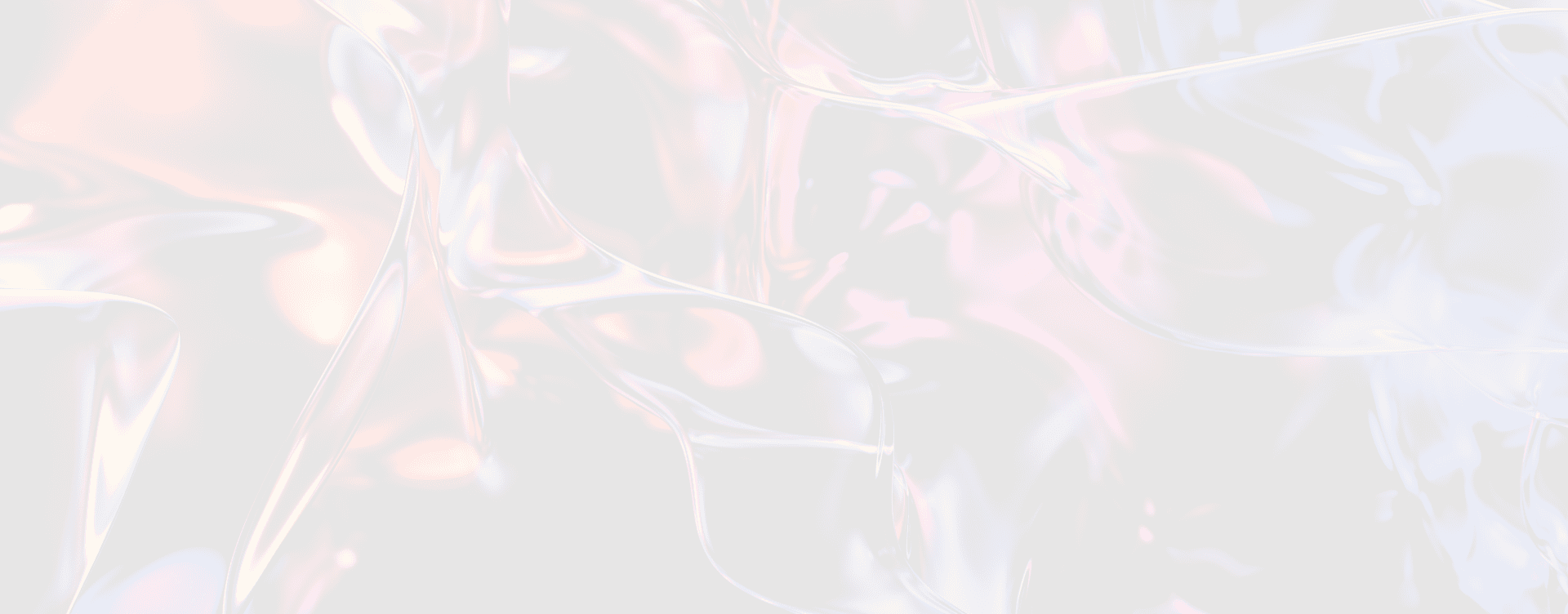The new version of software library MPI_2E_DTP_6 for Vehicle and Cargo X-ray Inspection Systems is developed. It is based on a set of improved mathematical algorithms for X-ray image processing.
Introduction
Analytical review of the X-ray inspection systems market predicts a significant growth on the base of Compound Annual Growth Rate (CAGR) for the next five years. It is fully applied to Vehicle and Cargo X-ray Inspection Systems, which is one of the priority areas of LINEV Systems.
Image quality and computation speed are the most important components of the overall software performance that affect attractiveness of the systems for customers. That is why the improvement of the software for image enhancement is always in focus of attention of R&D units.
The new library takes into account the critical remarks and wishes of our customers. As compared to the previous one, it provides more comfort while viewing images:
- Significant acceleration of image processing when using different GUI functions.
- Improved color rendering of the effective atomic number, especially for the systems based on accelerators.
- Improved image detail at low detector signals.
- Improved performance of some image processing algorithms.
- Some new image processing functions are added.
New architecture
GPU implementation GPU option is added to a CPU standard program implementation. With a comparable processing time, GPU version may outperform the CPU counterpart in quality of some image processing functions results due to more powerful algorithms involved. It is true, for example, for contrast enhancement for some systems. GPU implementation results in a less noisy images as shown on Fig.1.
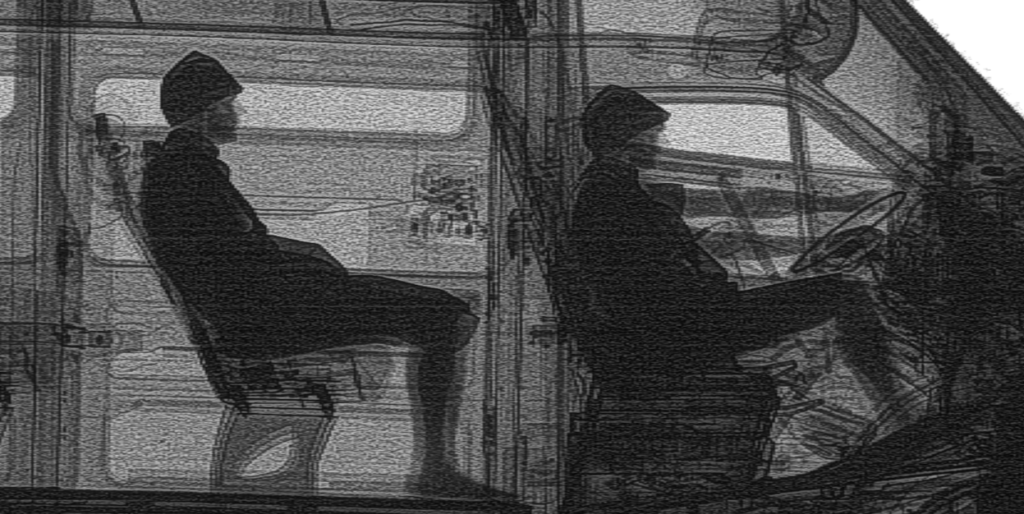

Optimized scenario
New architectural solutions have greatly improved overall program performance.
The new architecture is mainly based on:
- Separation of basic operations that run only once for any new scanned image to be processed. They are shown in Fig.2 as PREPROCESS. The rest of operations depends on user’s command combination choice and shown as PROCESS. In previous library version all operations ran each time when the user had selected any GUI function.
- Two different channels for preprocessing of input images: visual representation and material recognition. Both channels work independently and may use different algorithms for the best performance.
- Using buffers for storing intermediate results. It greatly reduced the number of redundant computations when executing User’ GUI commands.

Additional reduction in computing time is achieved by optimizing mathematical algorithms, by using approaches supporting parallel computations, and by applying multithreaded processing technologies.
New architectural solutions greatly reduced overall image processing time. Implemented improvements have increased computation performance by a factor of 2 to 9, which depends on involved GUI commands.
Improved color separation of materials
As is well known, dual-energy radiography with high energy photon beams exhibits significantly reduced accuracy of effective atomic number determination as compared with lower energy X-ray systems. It is especially noticeable at low doses, which are typical for drive-through inspection systems where cars move through the inspection portal under their own power with drivers in the cabins. It is mainly related to insufficient spectral separation of interlaced pulses of low and high energy, weak radiographic contrast at high energies (more typical for thin materials), high level of quantum noise and pulse-to-pulse instability of radiation output of the X-ray source.
Source instability can be efficiently compensated by using the primary beam monitor whose signal is not influenced by a scanned object. Radiographic contrast is limited by fundamental radiation properties and cannot be improved without sacrificing the penetration ability. Spectral separation could be potentially improved by using filtering materials or spectrometric type detectors. However, these approaches are very expensive and not always feasible. Thus, the most effective means of increasing effective number determination accuracy is the noise suppression by digital filters that preserve low contrast details and edges on X-ray images.
To improve color coding of materials a fast correlative algorithm was used for image denoising. This algorithm simultaneously uses low and high energy images to effectively isolate useful signals. Its effectiveness is illustrated in Figs. 3 and 4.

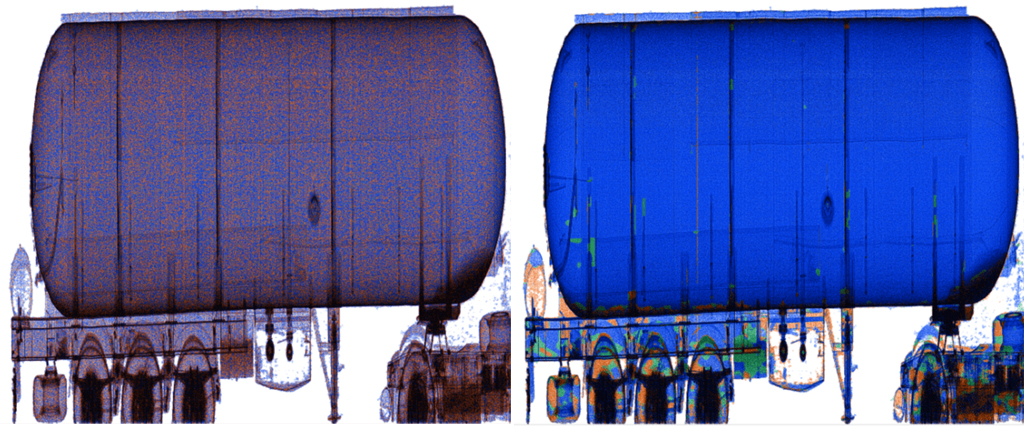
Shielding material stripping function
When the unknown material is shielded by a rather thick homogenous layer of steel, e.g., by steel walls, its effective number is incorrectly defined. Let us say, organic material behind steel shield can be falsely recognized as non-organic. In such cases, shielding material stripping function can be of great help. It allows to define correctly the chemical nature of shielded materials (see Fig. 5).
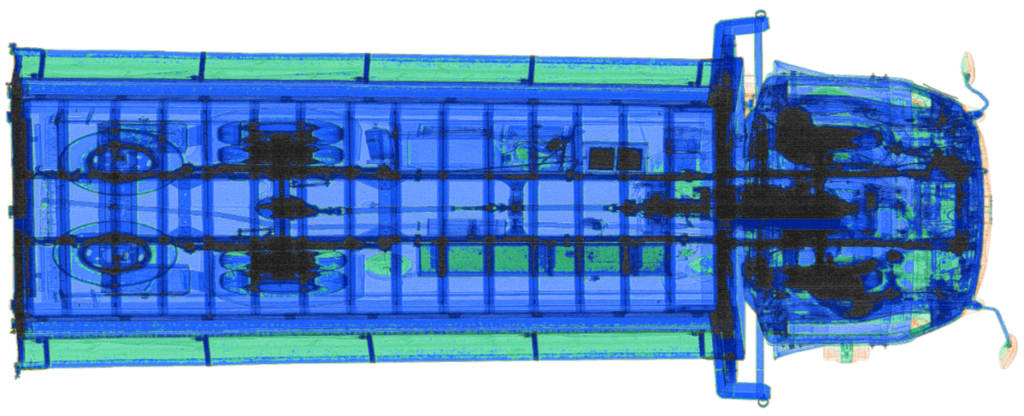
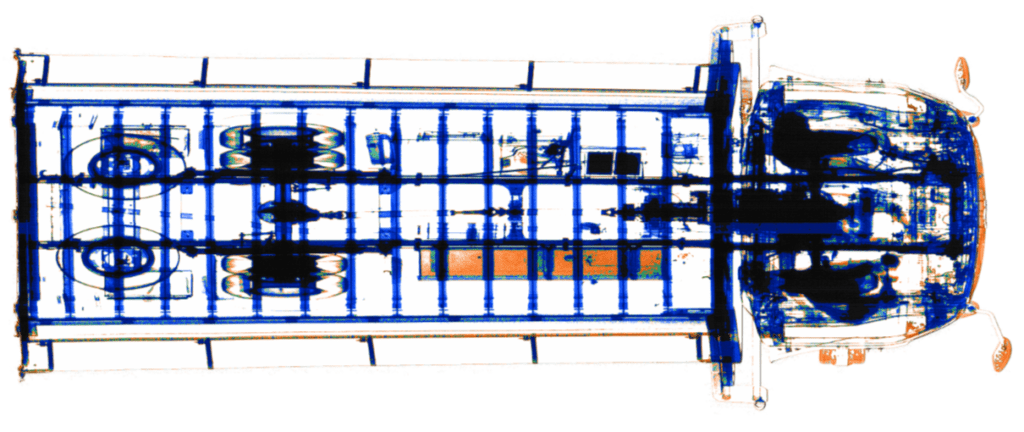
Background cleaner
The algorithm for segmenting of the informative parts of the image was improved to remove annoying noise from the remaining background areas. Its quality is illustrated on Fig.6.

Dark areas enhancement function
Some massive parts of the object, e.g., the engine, absorb almost fully the primary beam. Only a small part of photons passes through such areas and reach the detector forming dark image areas with low contrast and high level of noise. The analysis of such areas is difficult but can be facilitated with our new function. The algorithm enhances the visibility of image structure details even in case a very subtle contrast and high noise as shown in Fig. 7.
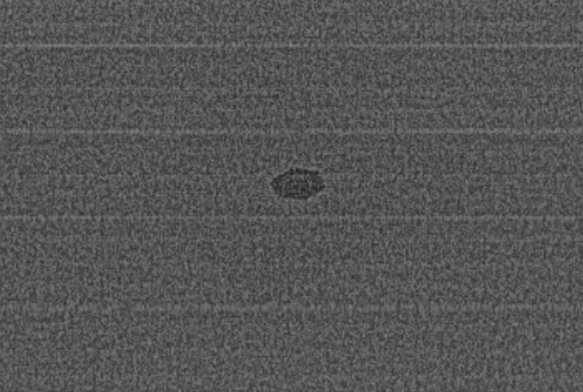

Improved pseudo-relief function
This function greatly simplifies the complicated image and focuses the operator’s attention on the overall structure and prominent parts as shown in Fig. 8.

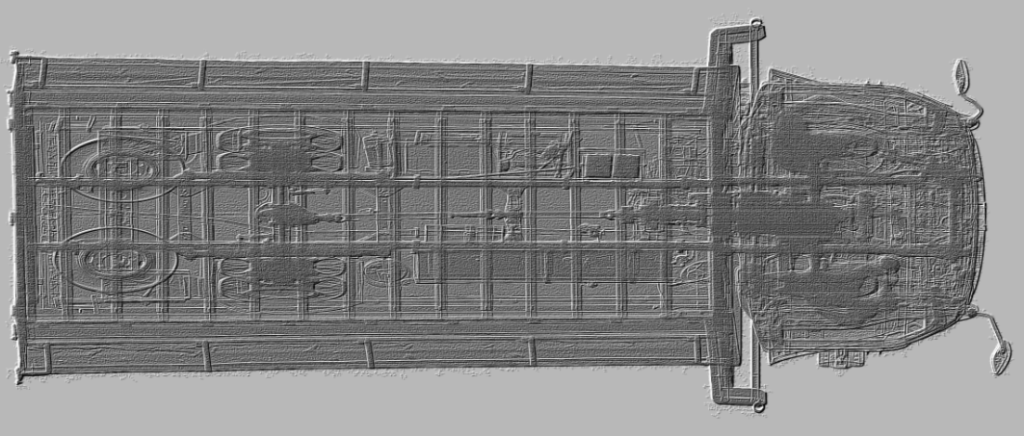
Image viewer
A new image viewer MPI_2E_DTP_6_TEST (see Fig. 9) was developed as a wrapper for our new library. It enables a flexible way of manipulating and experimenting with the library options and may serve as a self-contained instrument.
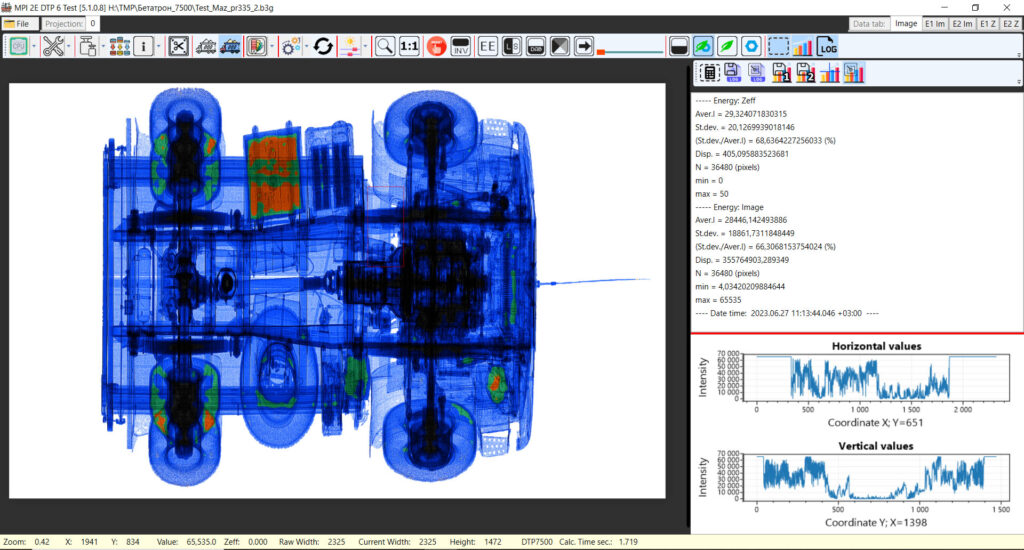
The viewer provides the user with a number of additional possibilities:
- Loading images with automatic selection of the scanner configuration.
- Manual creation of user’s scanner configuration.
- Fast switching between CPU and GPU implementations.
- Selecting a color palette from a predefined set or loading user’s palette.
- Image preprocessing tools: cutting off margins, renormalization and registration.
- Statistics in a selected rectangular area.
- Image sectioning with visual representation of sections.
- Saving all vies and data to files.
Conclusions
Taking into account overall performance, the new version of MPI_2E_DTP_6 library surpasses the older version that it replaces. The Vehicle and Cargo X-ray Inspection Systems software became more attractable for customers.
For more information about our cargo and vehicle inspection systems & to elevate your security measures please email ukinfo@linevsystems.com
Linev Systems UK
